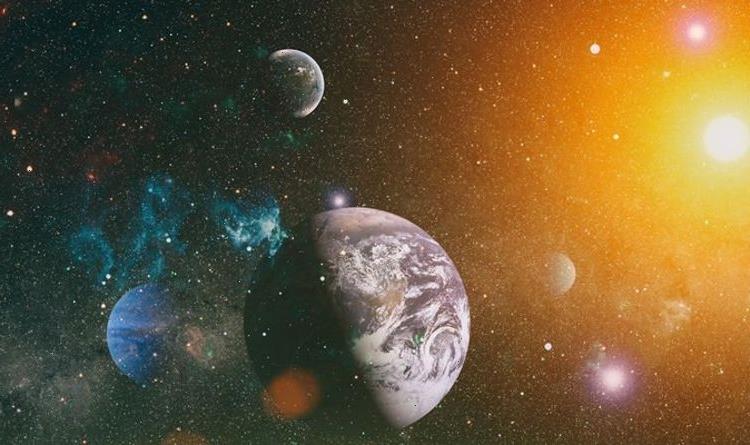Russia's Pirs module burns in space after being discarded
We use your sign-up to provide content in ways you’ve consented to and to improve our understanding of you. This may include adverts from us and 3rd parties based on our understanding. You can unsubscribe at any time. More info
The star, L 98-59, is only 35 light-years away from Earth and its orbiting planets have piqued the interest of experts. Two of them, nearest to the star, are likely dry, but one “ocean world” could be a prime candidate for supporting alien life. It has just half the mass of Venus, but a large portion of that mass seems to be made up of potentially life-supporting oceans, according to research published in the journal Astronomy & Astrophysics.
Maria Rosa Zapatero Osorio, an astronomer at Spain’s Centre for Astrobiology, said: “The planet in the habitable zone may have an atmosphere that could protect and support life”.
Experts used the ESPRESSO instrument on the European Southern Observatory (ESO) to study the tiniest exoplanets ever detected.
They found a system that is reportedly not too different from our own cosmic neighbourhood.
But L 98-59b, which is the most exciting of the bunch, is too tiny for scientists to directly image or analyse the chemical makeup of its atmosphere.


They have hypothesised that it could carry water based on the data they could extrapolate about its mass and because it’s close enough to its star to be warm but not boiling hot.
Some believe the three planets could be similar to ones in our own solar system.
Knicole Colon, an astrophysicist at NASA’s Goddard Space Flight Center, said: “This is somewhat analogous to looking at Venus, Earth and Mars in the solar system.”
But Venus, Earth and Mars are very, very different from one another, and experts still need to learn more.

The team is optimistic that upcoming observatories and astronomical tools, like NASA’s James Webb Space Telescope and the ESO’s Extremely Large Telescope, will allow them to determine the feasibility.
Lead study author Olivier Demangeon added: This system announces what is to come.
“We, as a society, have been chasing terrestrial planets since the birth of astronomy and now we are finally getting closer and closer to the detection of a terrestrial planet in the habitable zone of its star, of which we could study the atmosphere.”
DON’T MISS
Black hole shock: Scientist’s dire warning to humans [VIDEO]
Asteroid apocalypse: Scientist warns of ‘city-destroying’ space rock [OPINION]
Why ‘Trillion tonne rock hurtling towards Earth’ was ‘bad news’ [EXPLAINED]


The astronomers first spotted three of L 98-59’s planets in 2019, using NASA’s Transiting Exoplanet Survey Satellite (TESS).
Now, with the addition of radial velocity data from ESPRESSO, the extra planets were discovered.
It also allowed the first three planets to have their masses and radii measured – which could provide insights into what the planets are made of.
Source: Read Full Article
